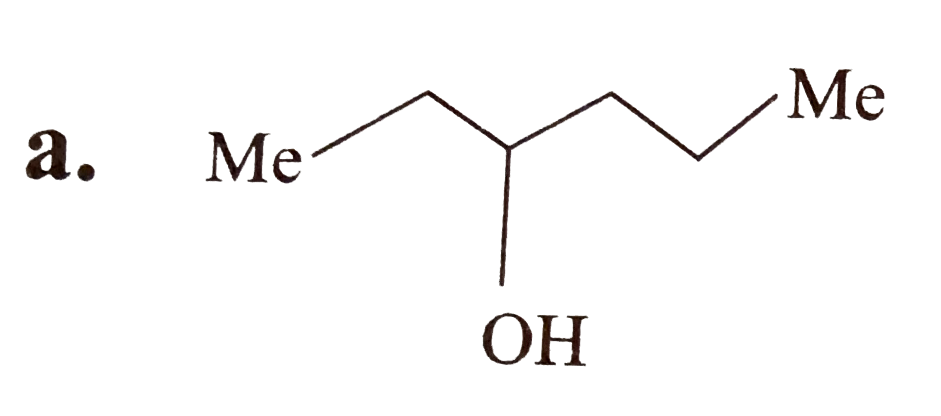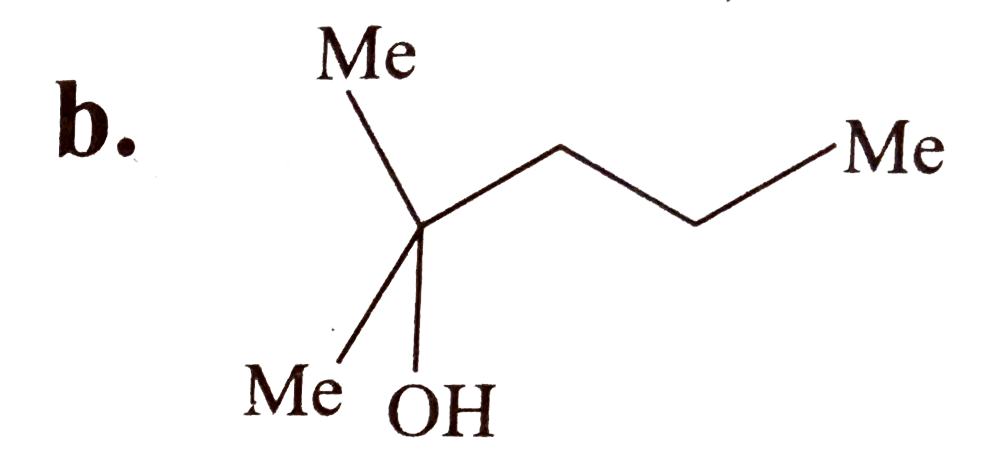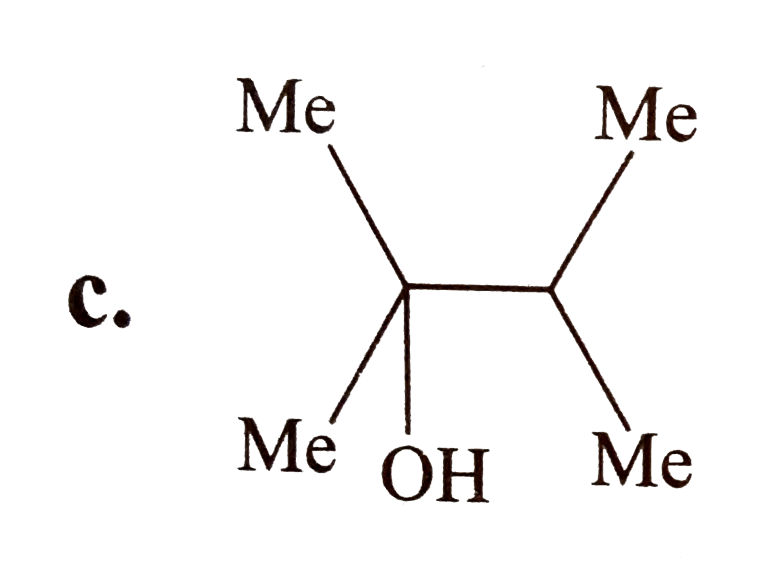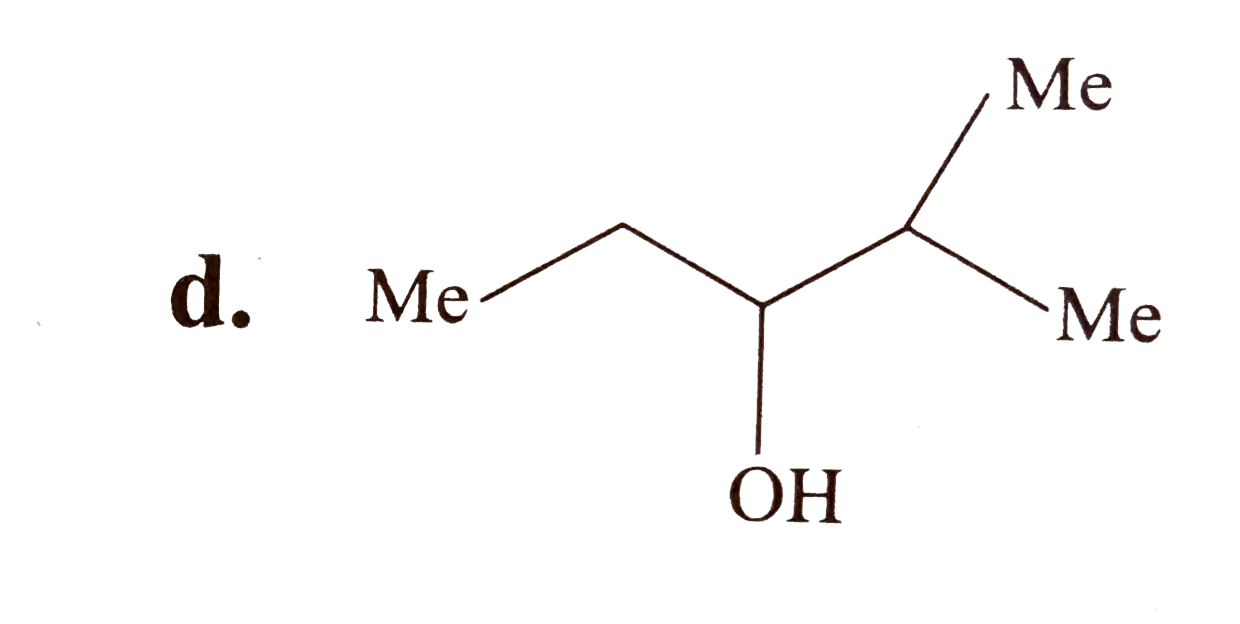Based on the following information arrange four metals A,B,C and D in order of decreasing ability to act as reducing agents :
(I) Only A,B, and C react with 1MHCl to give H2(g)
(II) When C is added to solutions of the other metal ions, metallic B and D are formed
(III) Metal C does not reduced An+
C>A>B>D
C>A>D>B
A>C>D>B
A>C>B>D
The correct Answer is:D
To arrange the metals A, B, C, and D in order of decreasing ability to act as reducing agents, we can analyze the information provided step by step.
Step 1: Analyze the reaction with HCl
From the first piece of information, we know that only metals A, B, and C react with 1M HCl to produce hydrogen gas. This indicates that these metals can act as reducing agents since they can reduce hydrogen ions (H⁺) to hydrogen gas (H₂). The metal that reacts will be oxidized in the process.
Hint: Metals that react with acids to produce hydrogen are likely good reducing agents.
Step 2: Determine the reactivity of D
Since D does not react with HCl, we can conclude that D has the least ability to act as a reducing agent among the four metals. Therefore, D will be placed last in our order.
Hint: If a metal does not react with an acid, it is likely a poor reducing agent.
Step 3: Analyze the displacement reaction involving C
The second piece of information states that when C is added to solutions of other metal ions, metallic B and D are formed. This means that C is able to displace both B and D from their ionic forms, indicating that C is more reactive than both B and D.
Hint: A metal that can displace others from their solutions is more reactive than those metals.
Step 4: Analyze the inability of C to reduce A
The third piece of information tells us that metal C does not reduce A⁺. This implies that A is more reactive than C, as C cannot displace A from its ionic form.
Hint: If a metal cannot reduce another metal ion, it is less reactive than that metal.
Step 5: Establish the order of reducing ability
From the analysis:
- A is more reactive than C (C cannot reduce A).
- C is more reactive than B and D (C can displace B and D).
- D is the least reactive since it does not react with HCl.
Thus, we can arrange the metals in order of decreasing ability to act as reducing agents:
1. A (most reactive)
2. C
3. B
4. D (least reactive)
Final Order
The final order of decreasing ability to act as reducing agents is:
A > C > B > D
Summary of the Solution
1. A, B, and C react with HCl; D does not.
2. C can displace B and D from their solutions.
3. C cannot reduce A, indicating A is more reactive than C.
4. Therefore, the order is A, C, B, D.
From the first piece of information, we know that only metals A, B, and C react with 1M HCl to produce hydrogen gas. This indicates that these metals can act as reducing agents since they can reduce hydrogen ions (H⁺) to hydrogen gas (H₂). The metal that reacts will be oxidized in the process.
Since D does not react with HCl, we can conclude that D has the least ability to act as a reducing agent among the four metals. Therefore, D will be placed last in our order.
The second piece of information states that when C is added to solutions of other metal ions, metallic B and D are formed. This means that C is able to displace both B and D from their ionic forms, indicating that C is more reactive than both B and D.
The third piece of information tells us that metal C does not reduce A⁺. This implies that A is more reactive than C, as C cannot displace A from its ionic form.
From the analysis:
- A is more reactive than C (C cannot reduce A).
- C is more reactive than B and D (C can displace B and D).
- D is the least reactive since it does not react with HCl.
1. A (most reactive)
2. C
3. B
4. D (least reactive)
The final order of decreasing ability to act as reducing agents is:
A > C > B > D
1. A, B, and C react with HCl; D does not.
2. C can displace B and D from their solutions.
3. C cannot reduce A, indicating A is more reactive than C.
4. Therefore, the order is A, C, B, D.
Topper's Solved these Questions
- ELECTROCHEMISTRYBOOK - NARENDRA AWASTHI ENGLISHCHAPTER - ELECTROCHEMISTRYEXERCISE - LEVEL-2
28 Videos
- ELECTROCHEMISTRYBOOK - NARENDRA AWASTHI ENGLISHCHAPTER - ELECTROCHEMISTRYEXERCISE - LEVEL-3
37 Videos
- DILUTE SOLUTIONBOOK - NARENDRA AWASTHI ENGLISHCHAPTER - DILUTE SOLUTIONEXERCISE - leval-03
23 Videos
- GASEOUS STATEBOOK - NARENDRA AWASTHI ENGLISHCHAPTER - GASEOUS STATEEXERCISE - Subjective problems
15 Videos
Similar Questions
Based on the following informations arrange four metals, A,B,C and D in order of increasing ability to act as reducing agents :
(I) Only C react with 1 M HCl to give H2(g)
(II) When A is added to solution of the other metal ions, metallic D is formed but not B or C
View SolutionArrange the following elements in the increasing order of non metallic character: B,C,Si,N and F.
View SolutionArrange the following alcohols in the decreasing order of their ease of dehydration with H2SO4.
a.
b.
c.
d.
e.
View SolutionHow does halogens react with (a) water (b) alkali and (c) metals
View SolutionThe position of elements A,B,C,D and E in the periodic table are shown below :

State which is the most reactive (i) metal (ii) non metal .
View SolutionThree metals A, B and C are arranged in increasing order of standard reduction electrode potential, hence their chemical reactivity order will be
View SolutionMention two uses of the following metals and non-metals :
(a) Iron
(b) Aluminium
(c) Gold
(d) Oxygen
(e) Iodine
View SolutionWhich metal gives hydrogen with all of the following: water, acids, alkalis ?
(A) Fe
(B) Zn
(C) Mg
(D) Pb
View SolutionIdentify, the elements with the following property and arrange them in increasing order of their reactivity.
(a) An element which is a soft and reactive metal.
(b) The metal which is an important constituent of limestone
(c) The metal which exists in liquid state at room temperature.
View SolutionGiven the following reaction involving A,B,C and D
(i) C+B+→C++B
(ii) A−+D→ NO reaction
(iii) C++A→ NO reaction
(iv) D+B+→D++B
the correct arrangement of A,B,C,D in the order of their decreasing ability as reducing agent
View Solution
